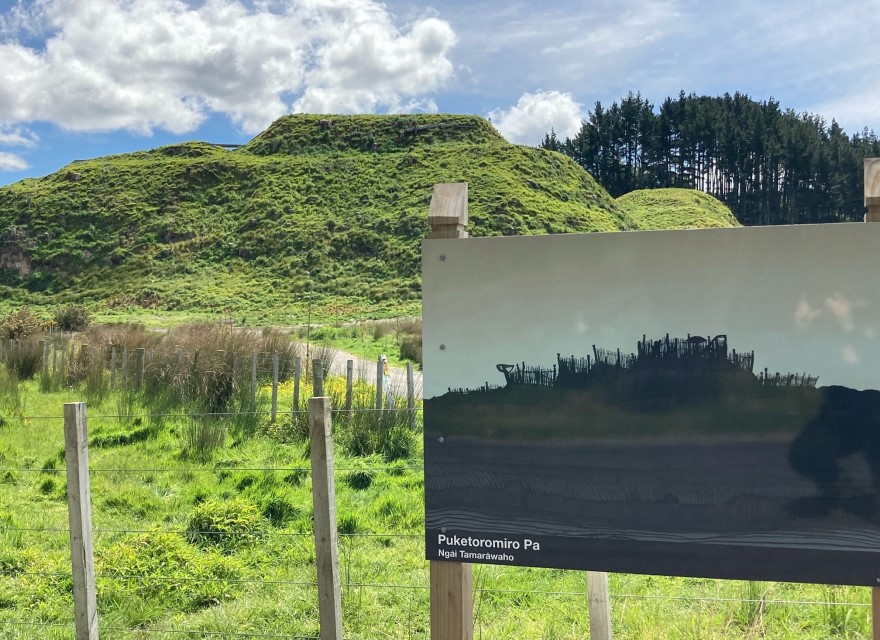The valley land was identified as significant to Ngāi Tamarāwaho and needing to be retained by Council for cultural, environmental and recreation purposes.
Ngāi Tamarāwaho has a long history of partnership with Tauranga City Council, resulting in significant development and improvements undertaken in the valley since 2005, including:
- Completion of the first stage of the Kopurererua River realignment in 2006. The second stage started in early 2022 and is anticipated to be completed by the end of 2024.
- Installation of several connector bridges (including Whakapaewaka) which has created wonderful cycling and walking links.
- Reinstatement of the archaeological features of Puketoromiro Pā which stands towards the southern end of the valley.

Ngāi Tamarāwaho is mana whenua of Kopurererua Valley and this place has special significance to the hapū.
It was the main feeder river into the Waikareao Estuary, a food source area, and the staging and retreating path for the Battle of Pukehinahina or Gate Pā and the Battle of Te Ranga which was fought on 29 April 1864 and 21 June 1864 respectively.
For the hapū, the Waikareao Estuary and the Kopurererua Valley are collectively regarded as being the kete kai (food baskets) of Ngāi Tamarāwaho.
This goes back to the times when the hapū lived on Motuopae Island and along the Te Papa and Ōtūmoetai peninsula, extending right back to the Taumata (Pyes Pā) and onto Ōtanewainuku and Pūwhenua, which are the mountains that mark the limits of their rohe.
The swamps (once navigable) and the Kopurererua stream were valuable for their fish, particularly eels, kahawai, mullet, parore and īnanga (whitebait). Flax and raupo were all important resources for the people in their various kainga (homes) scattered up and down the valley.
The valley contains important pā sites of Otamataha, Ōtūmoetai, Waikareao, Puketoromiro and Orangaipani.
The legend of Taurikura
Taurikura is the kaitiaki (guardian) of Ngāi Tamarāwaho.
Taurikura was a chief’s daughter who fled her village in shame after refusing to collect water for her grandfather. She turned herself into a ngārara (lizard) and swam the Kopurererua River out to Tauranga Moana. She landed on the rocky island of Karewa, near Matakana, and is the ancestor of tuatara that live on the island.